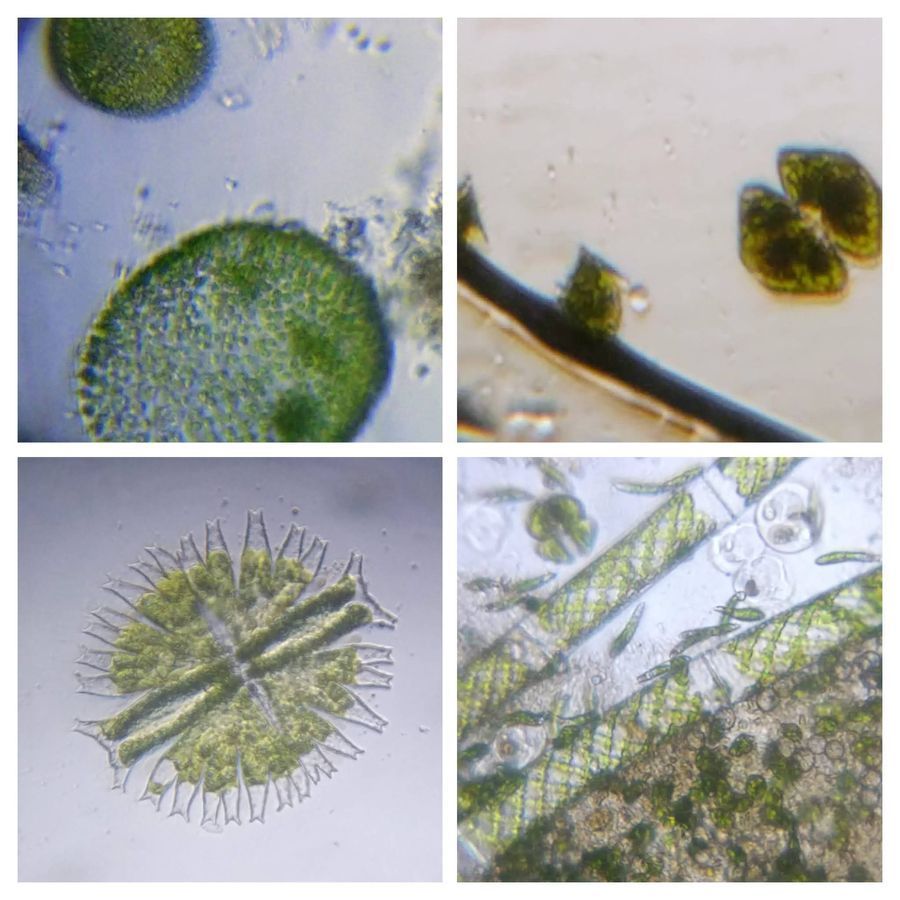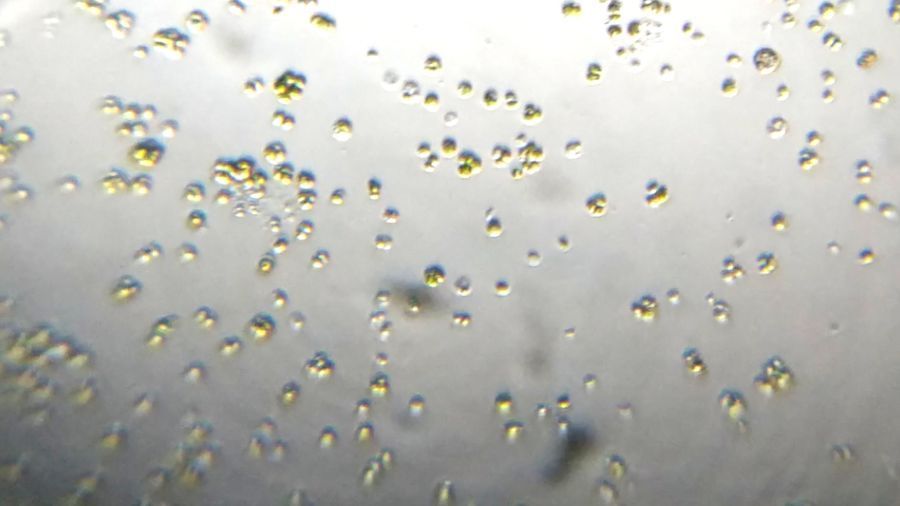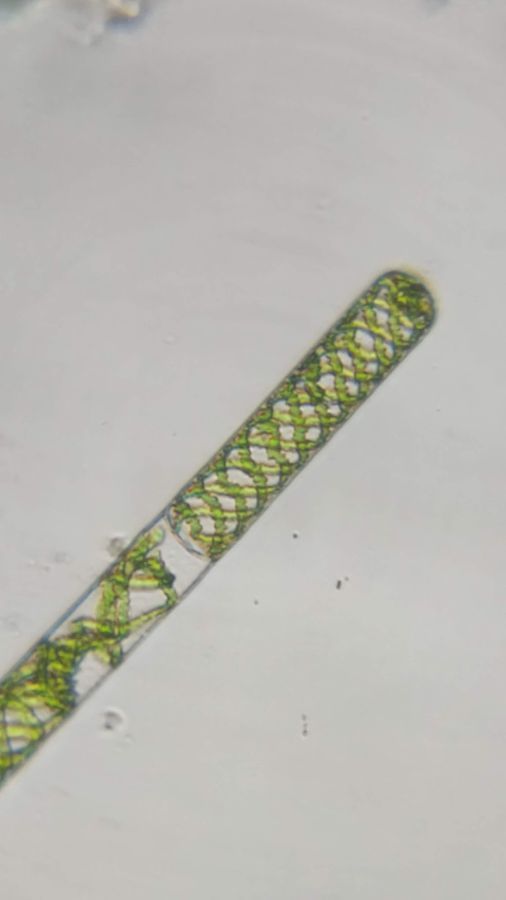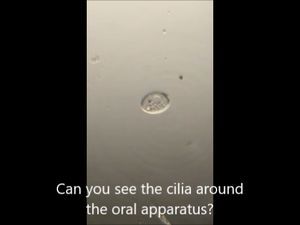II. Understanding the earliest farmers: The vast diversity of algae.
 Feb 23, 2023 • 6:29 AM UTC
Feb 23, 2023 • 6:29 AM UTC United States
United States 140x Magnification
140x Magnification Plants
Plants
Lakshminarayan Iyer
Human observer of life. https://sukshmadarshin.wordpress.com
97posts
1255comments
5locations

This is a continuation of a series I began (embarrassingly) a couple of years ago. https://microcosmos.foldscope.com/?p=transfer_197632 .
In the first part, we discussed the "crops" , cyanobacteria that are the so-called primary producers in our ecosystem. When you have a primary producer that can harvest light energy and make food (photosynthesis), they are usually the targets of heterotrophs. We see this in the macroscopic world too. Who wouldn't want ready-made food? However, a more elegant solution would be if a cell could hold onto the primary producer forever and in every cell (if it is multicellular) and also pass it on to future generations. This is what happened in the history of plants.
Somewhere over a billion and a half years ago, a eukaryote swallowed a cyanobacterium and didn't let go. They formed a stable association (Symbiotic?) This ancestor, technically the archaeplastida, was the ancestor of the green plants, the rhodophytes and an organism called the glaucophytes. I haven't had the chance to explore the rhodophytes or the fascinating glaucophytes, but there are several beautiful posts on rhodophytes in microcosmos. e.g. https://microcosmos.foldscope.com/?p=transfer_114317
The lineage leading to the green plants though I have extensively explored and in this post, I shall describe some algae I have encountered under the foldscope.
1. The simplest forms of these are the chlorophyte green algae. One such is the chlorophyte Chlamydomonas, a model system in many laboratories
In the first part, we discussed the "crops" , cyanobacteria that are the so-called primary producers in our ecosystem. When you have a primary producer that can harvest light energy and make food (photosynthesis), they are usually the targets of heterotrophs. We see this in the macroscopic world too. Who wouldn't want ready-made food? However, a more elegant solution would be if a cell could hold onto the primary producer forever and in every cell (if it is multicellular) and also pass it on to future generations. This is what happened in the history of plants.
Somewhere over a billion and a half years ago, a eukaryote swallowed a cyanobacterium and didn't let go. They formed a stable association (Symbiotic?) This ancestor, technically the archaeplastida, was the ancestor of the green plants, the rhodophytes and an organism called the glaucophytes. I haven't had the chance to explore the rhodophytes or the fascinating glaucophytes, but there are several beautiful posts on rhodophytes in microcosmos. e.g. https://microcosmos.foldscope.com/?p=transfer_114317
The lineage leading to the green plants though I have extensively explored and in this post, I shall describe some algae I have encountered under the foldscope.
1. The simplest forms of these are the chlorophyte green algae. One such is the chlorophyte Chlamydomonas, a model system in many laboratories

Here is a video of Chlamydomonas in the company of Tetrahymena . The Ciliates are trying to chomp down the algae. Chlamydomonas are often in tetrads.
2. This loose multicellularity of Chlamydomonas was institutionalized across the chlorophytes to something more permanent in organisms such as Gonium (4-16 cells), Pandorina (8.16 or 32 cells), Eudorina (16, 32, or 64 cells) and in Volvox (500-50,000 cells). Here are some videos of Volvox . They are fascinating. You can see the daughter colonies in them and even their flagellae (with some imagination).
Also at https://youtu.be/152tgl03kDY
4. At some point in the evolutionary history of the green plants, they completely lost their flagellae and perhaps reinvented their multicellularity. These then gave rise to the complex multicellular plants with vessels. The algal group closest to the land plants is the charophyte. We often see these in microcosmos posts. For example, the beautiful Spirogyra with a helical arrangement of chloroplasts is a charophyte. I am posting a picture below.
4. At some point in the evolutionary history of the green plants, they completely lost their flagellae and perhaps reinvented their multicellularity. These then gave rise to the complex multicellular plants with vessels. The algal group closest to the land plants is the charophyte. We often see these in microcosmos posts. For example, the beautiful Spirogyra with a helical arrangement of chloroplasts is a charophyte. I am posting a picture below.

5. Another fascinating member of the Charophytes is Micasterias, a type of desmids. Below is a timelapse of many hours where a picture was taken every 30 seconds or so. Notice that Micasterias is comprised of two half-cells. Each half-cell just has one chloroplast. What a massive chloroplast this is that has spread out in that weird shape. At the center is the nucleus.
Here is another time lapse of Micasterias I took for over 3 hours.
https://youtube.com/shorts/VG8tuzoWEjM?feature=share
Yet another desmid I have observed is Cosmarium, which is much smaller that Micasterias . Notice that there are two types of desmids in the next video.
Yet another desmid I have observed is Cosmarium, which is much smaller that Micasterias . Notice that there are two types of desmids in the next video.
From some of these Charophytes emerged the land plants such as the mosses and ferns, gymnosperms and angiosperms that dominate our landscape. Across posts, on the microcosmos we often see microscopic explorations of these multicellular plants and posts on leaves, stomata, pollen , trichomes, spores and so on.
In my next post I shall explore some experiments in evolution where organisms swallowed these photosynthetic plants in a secondary endosymbiosis event... To be continued.
In my next post I shall explore some experiments in evolution where organisms swallowed these photosynthetic plants in a secondary endosymbiosis event... To be continued.
Sign in to commentNobody has commented yet... Share your thoughts with the author and start the discussion!

 0 Applause
0 Applause 0 Comments
0 Comments_300x300.jpeg)

















